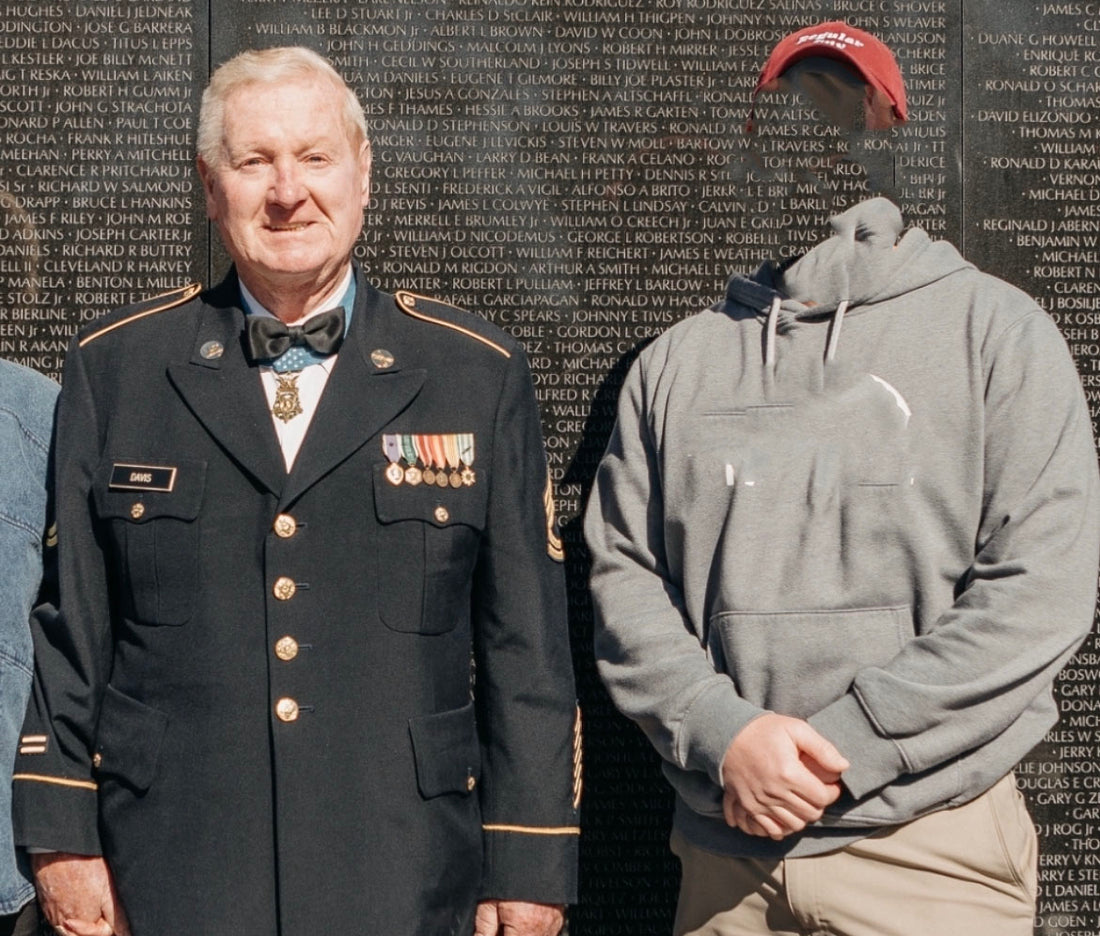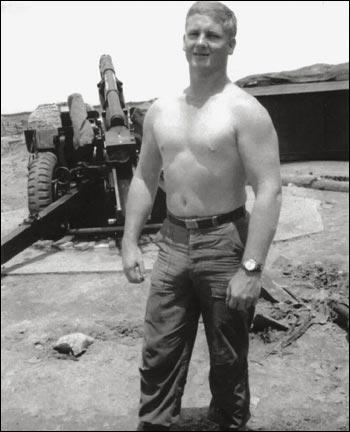
The Real Life Forrest Gump
My wife and I were visiting the Vietnam Wall memorial early one morning with plans to grab a few photos. I was taking in the sights and emotions, listening in on some conversations. Many Vietnam veterans have not made the trip to visit this place, and we saw a few who were there for the first time. I looked down the walkway I saw an older man wearing his dress blue uniform, the ASU. It was very out of place to see and immediately I thought "wow, this is a Vietnam vet wearing his uniform". As he got closer I paid attention to him and his group - a lady who must have been his wife, and a younger man recording everything. As he got closer I notice this wasn't just any veteran, he was wearing the Medal of Honor.
I spoke with the younger man who was there recording and asked if that was his father. He said no, it was just a friend. He went on to explain that the man standing with us was ret. SFC Sammy Davis, a MOH recipient and the "Real Life Forrest Gump". He was working on making a documentary while there and we just happened to cross paths.

Early on Nov. 18, 1967, his unit of 11 guns and 42 men was helicoptered into an area west of Cai Lay to set up a forward fire-support base -- Firebase Cudgel -- for American infantrymen operating in the area.
Shortly after midnight the next morning, Battery C came under heavy mortar attack. Almost simultaneously, an estimated 1,500 Vietcong soldiers launched an intense ground assault.

On Nov. 19, 1968, exactly one year after the nightlong firefight at Cai Lay, Davis received the Medal of Honor from President Lyndon Johnson. The footage of LBJ putting the medal around Davis' neck appeared in the movie "Forrest Gump" (with Tom Hanks' head substituted for Davis'), and Gump's fictional Medal of Honor citation was loosely based on Davis' real one.

His Medal of Honor citation is as follows - "For conspicuous gallantry and intrepidity in action at the risk of his life above and beyond the call of duty. Sgt. Davis (then Pfc.) distinguished himself during the early morning hours while serving as a cannoneer with Battery C, at a remote fire support base. At approximately 0200 hours the fire support base was under heavy enemy mortar attack. Simultaneously, an estimated reinforced Viet Cong battalion launched a fierce ground assault upon the fire support base. The attacking enemy drove to within 25 meters of the friendly positions. Only a river separated the Viet Cong from the fire support base. Detecting a nearby enemy position, Sgt. Davis seized a machine gun and provided covering fire for his gun crew, as they attempted to bring direct artillery fire on the enemy. Despite his efforts, an enemy recoilless-rifle round scored a direct hit upon the artillery piece. The resultant blast hurled the gun crew from their weapon and blew Sgt. Davis into a foxhole. He struggled to his feet and returned to the howitzer, which was burning furiously. Ignoring repeated warnings to seek cover, Sgt. Davis rammed a shell into the gun. Disregarding a withering hail of enemy fire directed against his position, he aimed and fired the howitzer which rolled backward, knocking Sgt. Davis violently to the ground. Undaunted, he returned to the weapon to fire again when an enemy mortar round exploded within 20 meters of his position, injuring him painfully. Nevertheless, Sgt. Davis loaded the artillery piece, aimed, and fired. Again he was knocked down by the recoil. In complete disregard for his safety, Sgt. Davis loaded and fired three more shells into the enemy. Disregarding his extensive injuries and his inability to swim, Sgt. Davis picked up an air mattress and struck out across the deep river to rescue three wounded comrades on the far side. Upon reaching the three wounded men, he stood upright and fired into the dense vegetation to prevent the Viet Cong from advancing. While the most seriously wounded soldier was helped across the river, Sgt. Davis protected the two remaining casualties until he could pull them across the river to the fire support base. Though suffering from painful wounds, he refused medical attention, joining another howitzer crew which fired at the large Viet Cong force until it broke contact and fled. Sgt. Davis' extraordinary heroism, at the risk of his life, is in keeping with the highest traditions of the military service and reflect great credit upon himself and the U.S. Army".

5 comments
Heck yeah never heard this story before… you all need more artillery stuff on here
Duty, Honor, Country.
Few people do so much in one lifetime.
God bless!!
Awesome article! I have never heard of nor saw the actual man behind the movie. Thank you for sharing!